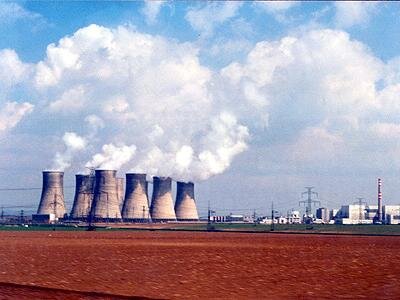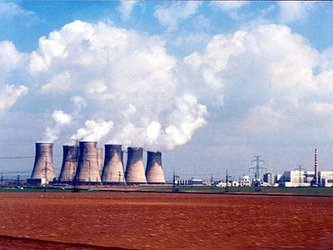ESA satellite technology enhances nuclear monitoring
Satellite telecommunication technology developed with support from ESA is being used to enhance the connections between the International Atomic Energy Agency's remote monitoring centre and nuclear facilities around the world, including the Chernobyl site.
The International Atomic Energy Agency (IAEA) is well known for their mission of monitoring the worldwide flow of nuclear materials and safeguarding the implementation of the Nuclear Non-Proliferation Treaty. From their headquarters in Vienna, the IAEA safeguards numerous nuclear facilities in many countries and across several continents.
To support the online monitoring of nuclear facilities, the IAEA has a remote monitoring data centre, which downloads data from over 140 systems worldwide. Fifty radiation detection systems and 90 surveillance systems (including 340 cameras producing 150,000 images per day) generate to up to two gigabytes per day of global data traffic.
Online monitoring depends on reliable communications between the remote sites, IAEA headquarters and its regional offices in Tokyo & Toronto. Following intensive investigations of technological solutions, the IAEA - in cooperation with ESA - has now decided to verify the suitability of a worldwide satellite communications network. This project will play a very important role, assisting the IAEA in performing a thorough assessment and in obtaining evidence of the performance and benefits of a space-based communications infrastructure.

For the IAEA, connectivity via satellite to reach the locations of geographic interest will be an important step forward. Reaching all corners of the world with a single hop via satellite makes IAEA communications independent of terrestrial networks. This is achieved by the multi-satellite and multi-transponder capability of the selected network technology. Furthermore, the new system allows the simultaneous carrying of all types of services at the same time via one network. Telephony, written reports, images and data can be all be sent, along with live videoconferencing.
Under ESA and IAEA supervision, the deployment of a pilot network, which will be used to identify and evaluate interoperability and network design issues, has begun. The central hub of the network in the IAEA headquarters building will be connected this year to sites in four countries: Brazil, Hungary, Armenia, and the Chernobyl facility in the Ukraine. Further sites can be added at any time in the future.
The selected communications technology is known as 'Digital Video Broadcasting - Return Channel via Satellite' (DVB-RCS), an open standard for two-way transmission of digital data. Development and promotion of DVB-RCS has been funded by ESA as part of its Advanced Research in Telecommunications (ARTES) programme.
The partnership with ESA will give the IEAE welcome additional infrastructure capability for its ever-expanding remote monitoring network.





